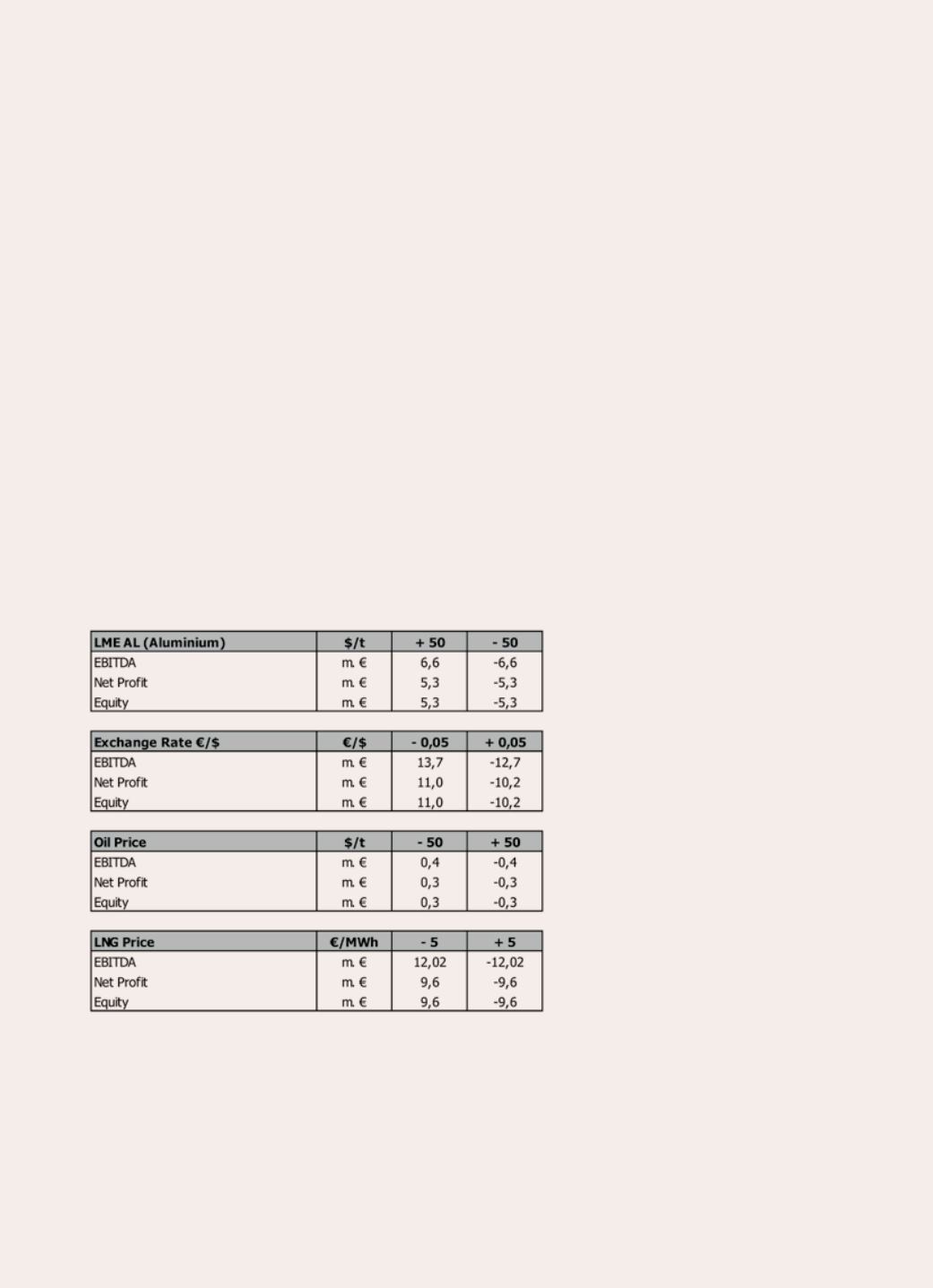
38
Management Department establishes financial derivative and non-derivative instruments with financial
organizations for the account and in the name of the Group’s companies.
At the Group level, such financial instruments are considered to constitute compensation means for the
exchange rate risk of specific assets, liabilities or future commercial transactions.
Interest rate risk
The Group’s assets that are exposed to interest rate fluctuation primarily concern cash and cash equivalents.
The Group’s policy as regards financial assets is to invest its cash in floated interest rates so as to maintain the
necessary liquidity while achieving satisfactory return for its shareholders. In addition, for the totality of its bank
borrowing, the Group uses floating interest rate instruments. Depending on the level of liabilities in floating
interest rate, the Group proceeds to the assessment of interest rate risk and when necessary examines the
necessity to use interest bearing financial derivative instruments. The Group’s policy consists in minimizing its
exposure to interest bearing cash flow risk as regards long-term funding.
Effect from risk factors and sensitivities analysis
The effect from the above mentioned factors to Group’s operating results, equity and net results presented
in the following table:
It is noted that an increase of five (5) basis points presume a decrease of 4 mil. € on net results and Equity.
The Group’s exposure in price risk and therefore sensitivity may vary according to the transaction volume and
the price level. However the above sensitivity analysis is representative for the Group exposure in 2012.


